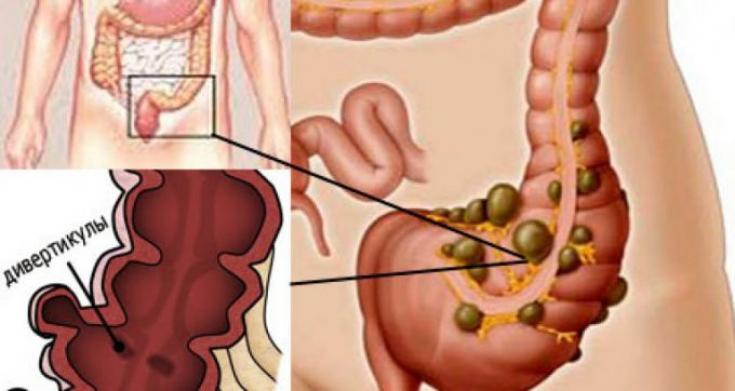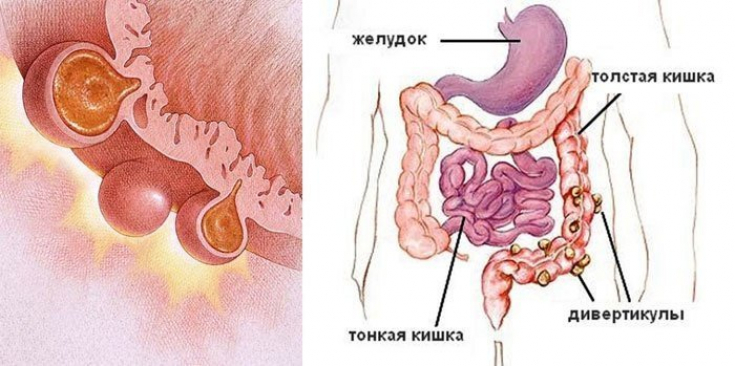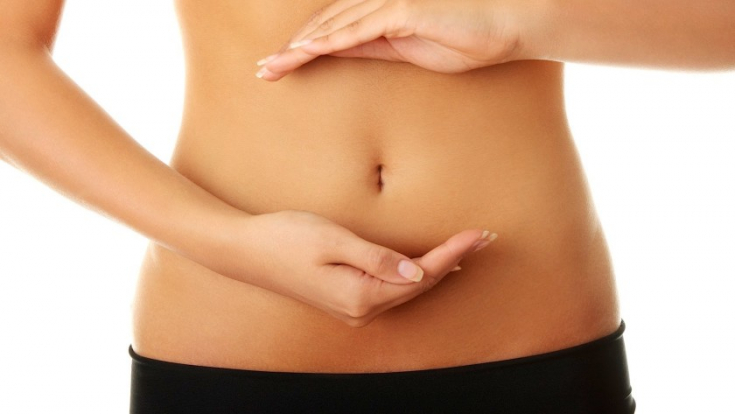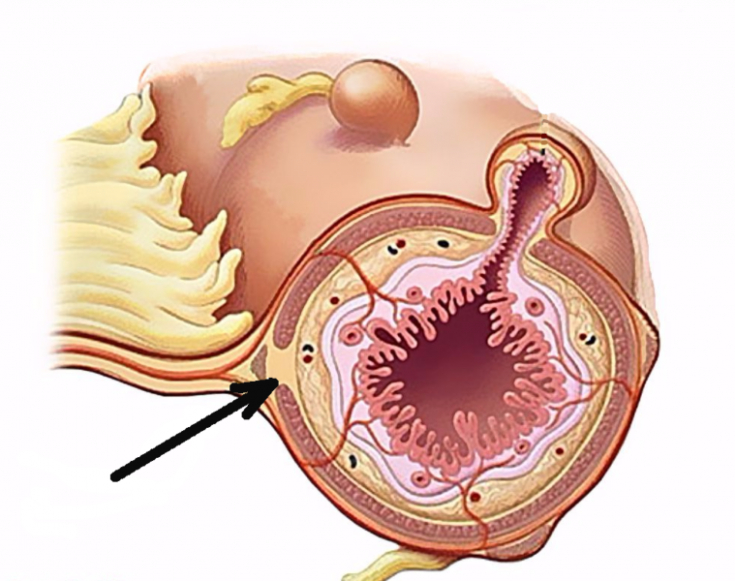There are diseases that do not manifest themselves for a long time, causing harm. One of them — diverticulosis, the symptoms, treatment and causes of which we will discuss in this article. Having such a disease, most often, a person does not suspect that he is sick, because there are no symptoms characteristic only for this health problem.
The feeling of discomfort in the abdomen is attributed to stress or ordinary overeating. The editors of estet-portal.com will tell you what signs to recognize diverticulosis, what is its cause and whether there are effective methods of treatment.
Diverticulosis – what is it and what are the reasons
Given that many do not suspect the presence of this disease, not every person knows what diverticulosis is. Diverticulosis – this is a disease of the large intestine, in which the so-called diverticula are formed in it – small protrusions of the intestinal walls facing the abdominal cavity. The dimensions of such branches – from 3 mm to 3 cm. They are very rare in the small intestine, unlike the large intestine. And if there are many such formations in the colon – talking about diverticulosis.

There is a congenital form of diverticulosis. It is diagnosed in young children. Her reason – connective tissue pathology. However, this disease most often appears in adulthood. After 40 years, diverticula are found in 30% of people. The older the person – the greater the risk. But lately, the disease has been actively "getting younger". And if after forty the appearance of diverticula is explained by the deterioration of intestinal motility, then at a young age – wrong way of life and nutrition.
So, the craze for fast food, salty and fatty foods, smoked meats does not improve the condition of the gastrointestinal tract. A sedentary lifestyle is also harmful to our intestines. Lack of fiber in the daily menu – one of the most important risk factors.
Also causes of diverticulitis are:
• frequent constipation;
• flatulence;
• diseases of the gastrointestinal tract.
Given the unhealthy lifestyle of most people, irregular meals, sedentary work, it can be argued that almost everyone is at risk of diverticulosis.
Read also: Possible causes of abdominal pain: when you should definitely see a doctor
Diverticulosis – symptoms and treatment of disease
It is important to recognize the disease in time in order to start treatment at an early stage. Diverticulosis, the symptoms and treatment of which will be described later, often does not manifest itself with any pronounced signs. The pain that appears because of it does not always become a reason for going to the doctor. In 80% of patients, no severe symptoms are observed. And they diagnose the presence of diverticula most often by accident.

Which symptoms should make you wary:
• violation of the habitual defecation regimen;
• a feeling of heaviness and discomfort in the abdomen;
• spastic pain in the lower abdomen that disappears after going to the toilet;
• increased flatulence, flatulence;
• false toilet urges;
• feeling of fullness of the intestines after a bowel movement;
• bleeding from the anus, blood in the stool.
Any of these symptoms should be a reason to go to the doctor. After all, there are already violations in the work of the intestines.
Read also: Bloating: a temporary discomfort or symptom of illness
How Diverticulosis is Treated: Lifestyle and Medications
The procedures are aimed at normalizing the volume and consistency of feces, reducing the severity of spasms. This is achieved mainly by changes in diet. Also, the patient is advised to change the lifestyle to a more mobile one if hypodynamia was observed.

Nutrition must necessarily include vegetable fiber. It is she who makes the feces looser and less dense. And it normalizes the intestinal microflora, promotes the growth of beneficial bacteria.
Adult Daily Value – about 30 grams of fiber. To do this, include the following products in the menu:
• 2-3 tablespoons of bran;
• unhusked rice;
• vegetables and fruits – raw or steamed;
• cereals and whole grains;
• wholemeal pastries;
• fermented milk products.
But what should be excluded is fast food, fatty and fried. Meat and animal products should be consumed in moderation. Foods such as canned food, rice and semolina, pasta, semi-finished products, carbonated sweet drinks, strong tea and coffee, alcohol are not recommended.
Read also: The right diet: an example of a menu for every day
The recommendations of the doctor will not be limited to one diet. The specialist will prescribe antispasmodics. And with a tendency to constipation – laxatives. It is not recommended to take them without consulting a doctor. But what exactly should be in the diet – So it's probiotics. If conservative treatment does not help, they resort to surgery – removal of the affected part of the intestine.

Like all diseases, diverticulosis also requires attention: its symptoms and treatment are not specific, it is difficult to recognize it without a doctor, and not to allow – means to follow the right diet and exercise. Regularly undergo examinations, note all changes in the state of health and the functioning of the digestive tract.
Read also: Healthy snacking: 6 healthy menu ideas






Add a comment